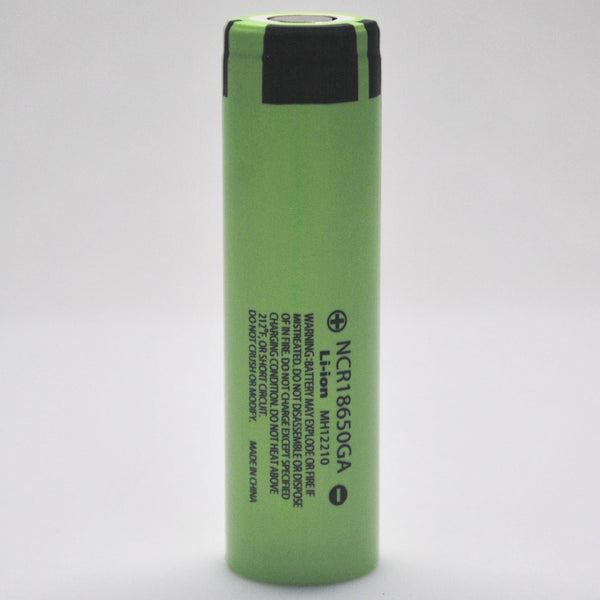I'm trying to better understand some of the math related to my DPV battery pack. I have a Genesis 2.1, so that is what I'll be using as an example.
Please correct me on what I say that is wrong!
The specs say it has 850 Wh of capacity. It has 72 indvidual 18650 cells which are 3500 mAh (i.e. 3.5 Ah) each.
18650 batteries are 4.2V when full, but the Genesis BMS limits the charge to 4.15V (or very close) in the interest of cell longevity.
18650 cells are generally not discharged below 2.5V. If they get to 2.0V or less, they are considered damaged beyond repair and a fire hazard to attempt to recharge.
850 / 72 = 11.8 Wh per cell.
11.8 Wh / 3.5Ah = 3.4V
Is that just telling us the average voltage the cell will put out? I.e. if you draw 1 A (from a 3.5Ah cel), then it will start at 4.15V and go down slowly, giving an average voltage of 3.4V over the 3.5 hours that it lasts? Meaning that it draws down to 2.65V and is then considered to be at 0% SOC (State Of Charge)?
That seems correct.
So, is this discharge curve (of voltage) linear? Is there a way to tell, just from the voltage, when you're at (just for example) 80% of total energy remaining? 3.85V is 80% of the way from 2.65 to 4.15V, so does that mean when the cells are at 3.85V, the pack is at 80% SOC?
Ultimately, I'm trying to understand what the BMS app for my scooter is telling me.
The % SOC that is displays doesn't seem to be connected to reality, at all. Last time I charged it, it was showing 1% SOC when the voltage of the whole pack was at 58.46V. And then it was showing 100% when V was at 72.29V. But it kept charging, right up to 74.78V - still showing 100%.
If I can't rely on the BMS app SOC to tell me how much battery I have left, and if voltage doesn't drop linearly with energy used/remaining, how do I tell how much energy my scooter has left?
For example: Say I don't want to ever run it below 20% remaining. I do a dive and the BMS app says I used 40%, so I have 60% remaining. Can I REALLY do the exact same dive again and finish at 20% remaining? It seems like I can't trust the BMS app in that way. And I can't look at the actual pack voltage and answer that question, either.
Maybe I need to calibrate the BMS somehow? If so, how do I do that? Charge the scooter to full and then run it until the scooter cuts off?
???????
Please correct me on what I say that is wrong!
The specs say it has 850 Wh of capacity. It has 72 indvidual 18650 cells which are 3500 mAh (i.e. 3.5 Ah) each.
18650 batteries are 4.2V when full, but the Genesis BMS limits the charge to 4.15V (or very close) in the interest of cell longevity.
18650 cells are generally not discharged below 2.5V. If they get to 2.0V or less, they are considered damaged beyond repair and a fire hazard to attempt to recharge.
850 / 72 = 11.8 Wh per cell.
11.8 Wh / 3.5Ah = 3.4V
Is that just telling us the average voltage the cell will put out? I.e. if you draw 1 A (from a 3.5Ah cel), then it will start at 4.15V and go down slowly, giving an average voltage of 3.4V over the 3.5 hours that it lasts? Meaning that it draws down to 2.65V and is then considered to be at 0% SOC (State Of Charge)?
That seems correct.
So, is this discharge curve (of voltage) linear? Is there a way to tell, just from the voltage, when you're at (just for example) 80% of total energy remaining? 3.85V is 80% of the way from 2.65 to 4.15V, so does that mean when the cells are at 3.85V, the pack is at 80% SOC?
Ultimately, I'm trying to understand what the BMS app for my scooter is telling me.
The % SOC that is displays doesn't seem to be connected to reality, at all. Last time I charged it, it was showing 1% SOC when the voltage of the whole pack was at 58.46V. And then it was showing 100% when V was at 72.29V. But it kept charging, right up to 74.78V - still showing 100%.
If I can't rely on the BMS app SOC to tell me how much battery I have left, and if voltage doesn't drop linearly with energy used/remaining, how do I tell how much energy my scooter has left?
For example: Say I don't want to ever run it below 20% remaining. I do a dive and the BMS app says I used 40%, so I have 60% remaining. Can I REALLY do the exact same dive again and finish at 20% remaining? It seems like I can't trust the BMS app in that way. And I can't look at the actual pack voltage and answer that question, either.
Maybe I need to calibrate the BMS somehow? If so, how do I do that? Charge the scooter to full and then run it until the scooter cuts off?
???????





